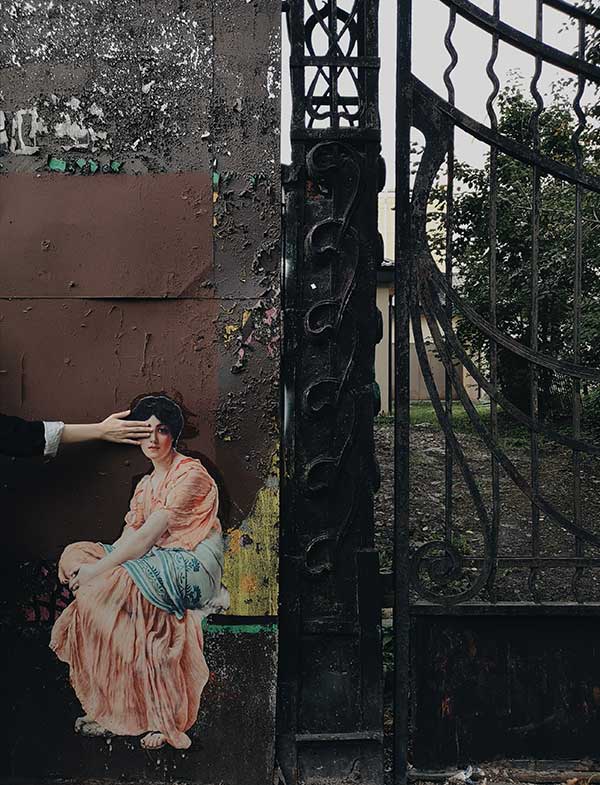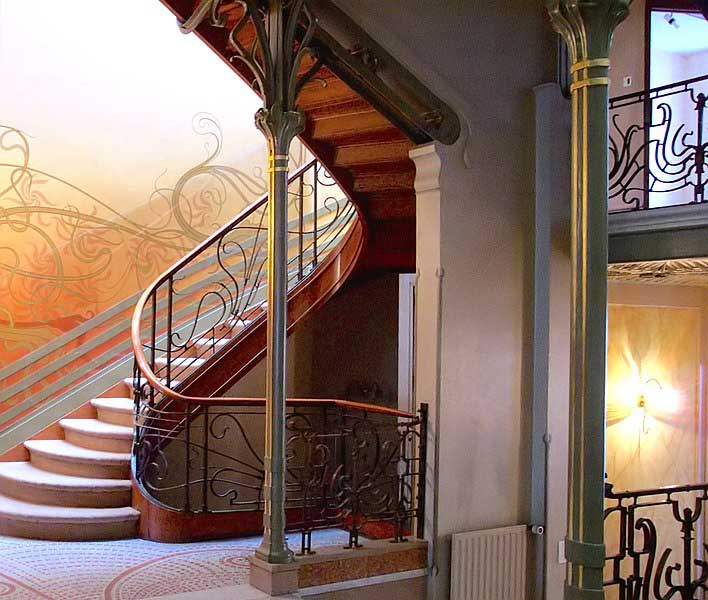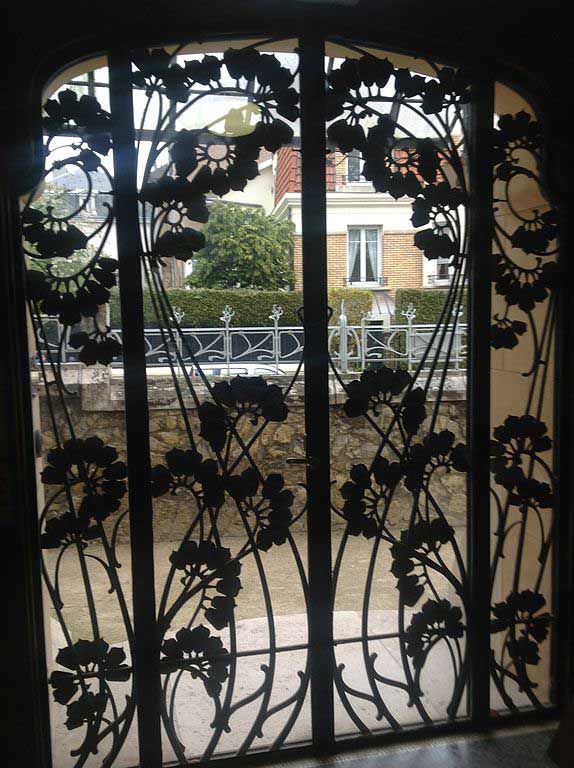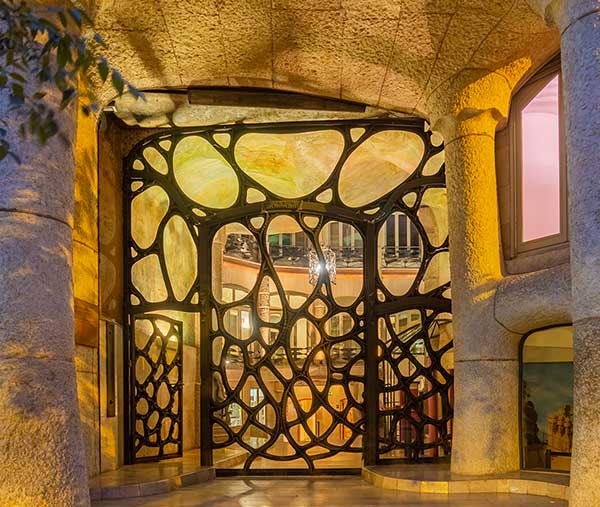
Art Nouveau’s Metalwork, Delicate Architectural Details
Here we can talk about the influence of Art Nouveau as an architectural style on metalwork.
Architectural metalwork designed in the Art Nouveau style displayed bizarre and dynamic forms inspired by the sinuous curves of the natural shape of flowers, stems and blossoms. These shapes with the same elegance and delicate details in nature weren’t geometrical, parallel or symmetrical. They were smooth and flowing and formed organically as the natural figures of trees and bushes, mountains and clouds.
Certainly, an essential characteristic of Art Nouveau was using new materials like metal in architecture and Interior design. Also, metalwork was associated significantly in producing design products in decorative art fields and applied art.
At the time of Art Nouveau, the architects used widely wrought Iron in buildings for producing fences, decorative balconies, stair railings, gateways, and metallic elements in interior work.
Following the artistic style that took the name “New Art, ” the designers produced highly qualified metallic products in architecture and sculpture and fabricated interior objects such as lampshades, kitchen fixtures, and knob handles.
From the beginning of the 19th century, wrought Iron was replaced by cast iron because of the lower production costs. As iron had become more common, it was used widely for cooking utensils, stoves, grates, locks, hardware, and other household uses.
The Elegance Of The Architectural Metalwork, Art Nouveau Style
The early metalworker was familiar with hammering, embossing, chasing, inlaying, gilding, and wiredrawing. Here there is an issue to point out about the metalwork during the last century. Is metalcraft evolved like other crafts in history? Surprisingly the answer is negative. You can’t imagine that the production techniques from almost a hundred years ago up to the present are generally not changed. However, these methods in many things are remarkably improved. But they don’t include the main techniques of producing metalwork. Still, metalwork demands a great deal of high-quality work and is a labour-intensive production process that involves high costs. The ancient metalworkers were significantly knowledgeable and had a great experience building churches and temples. It is incredible how they created artworks without arc welders or tools. It was amazing how they had joined metals together and made elaborate pieces without motorized machines.
The preservation of the materials, including metalwork in the historical buildings, is essential. As metal interacts with natural environmental conditions, it changes its texture and colour. It needs professional treatment to prevent further erosion. No wonder that the maintenance of stylized and architectural metalwork demands professional expertise.
Millions of visitors worldwide admire the elegance and the beauty of Art Nouveau’s architectural metalwork.
See also Major Town houses of the Architect Victor Horta.
Visit also Gaudiallgaudi Website about Iron and Metals in the works of Gaudi.
Text: Lalerou
© Copyright. All Rights Reserved
- Category: Architectural Metalwork Art Nouveau
View also our related articles:
Vintage
Vintage



